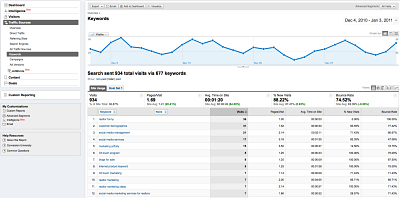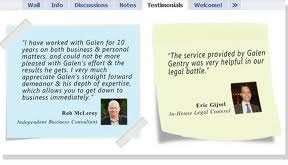While some stress is a normal part of the workplace, excessive stress can interfere with your productivity and reduce your physical and emotional health. Finding ways to manage workplace stress is not about making huge changes to every aspect of your work life or rethinking career ambitions. Rather, stress management requires focus on the one thing that’s always within your control: you.
 Coping with work stress in today’s uncertain climate
Coping with work stress in today’s uncertain climate
For workers everywhere, the troubled economy may feel like an emotional roller coaster. "Layoffs" and "budget cuts" have become bywords in the workplace, and the result is increased fear, uncertainty, and higher levels of stress. Since job and workplace stress increase in times of economic crisis, it’s important to learn new and better ways of coping with the pressure.
The ability to manage stress in the workplace can not only improve your physical and emotional health, it can also make the difference between success or failure on the job. Your emotions are contagious, and stress has an impact on the quality of your interactions with others. The better you are at managing your own stress, the more you'll positively affect those around you, and the less other people's stress will negatively affect you.
You can learn how to manage job stress
There are a variety of steps you can take to reduce both your overall stress levels and the stress you find on the job and in the workplace. These include:
- Taking responsibility for improving your physical and emotional well-being.
- Avoiding pitfalls by identifying knee jerk habits and negative attitudes that add to the stress you experience at work.
- Learning better communication skills to ease and improve your relationships with management and coworkers.

 Tip 1: Recognize warning signs of excessive stress at work
Tip 1: Recognize warning signs of excessive stress at work
When you feel overwhelmed at work, you lose confidence and may become irritable or withdrawn. This can make you less productive and less effective in your job, and make the work seem less rewarding. If you ignore the warning signs of work stress, they can lead to bigger problems. Beyond interfering with job performance and satisfaction, chronic or intense stress can also lead to physical and emotional health problems.
Signs and symptoms of excessive job and workplace stress

Common causes of excessive workplace stress
- Fear of being laid off
- More overtime due to staff cutbacks
- Pressure to perform to meet rising expectations but with no increase in job satisfaction
- Pressure to work at optimum levels – all the time!
 Tip 2: Reduce job stress by taking care of yourself
Tip 2: Reduce job stress by taking care of yourself
When stress at work interferes with your ability to perform in your job, manage your personal life, or adversely impacts your health, it’s time to take action. Start by paying attention to your physical and emotional health. When your own needs are taken care of, you’re stronger and more resilient to stress. The better you feel, the better equipped you’ll be to manage work stress without becoming overwhelmed.
Taking care of yourself doesn’t require a total lifestyle overhaul. Even small things can lift your mood, increase your energy, and make you feel like you’re back in the driver’s seat. Take things one step at a time, and as you make more positive lifestyle choices, you’ll soon notice a reduction in your stress levels, both at home and at work.
Get moving
Aerobic exercise—activity that raises your heart rate and makes you sweat—is a hugely effective way to lift your mood, increase energy, sharpen focus, and relax both the mind and body. For maximum stress relief, try to get at least 30 minutes of heart-pounding activity on most days. If it’s easier to fit into your schedule, break up the activity into two or three shorter segments.
Make food choices that keep you going
Low blood sugar can make you feel anxious and irritable, while eating too much can make you lethargic. By eating small but frequent meals throughout the day, you can help your body maintain an even level of blood sugar and avoid these swings in mood.
Drink alcohol in moderation and avoid nicotine
Alcohol temporarily reduces anxiety and worry, but too much can cause anxiety as it wears off. Drinking to relieve job stress may also eventually lead to alcohol abuse and dependence. Similarly, smoking when you're feeling stressed and overwhelmed may seem calming, but nicotine is a powerful stimulant – leading to higher, not lower, levels of anxiety.
Get enough sleep
Not only can stress and worry can cause insomnia, but a lack of sleep can leave you vulnerable to even more stress. When you're well-rested, it's much easier to keep your emotional balance, a key factor in coping with job and workplace stress.
 Tip 3: Reduce job stress by prioritizing and organizing
Tip 3: Reduce job stress by prioritizing and organizing

When job and workplace stress threatens to overwhelm you, there are simple steps you can take to regain control over yourself and the situation. Your newfound ability to maintain a sense of self-control in stressful situations will often be well-received by coworkers, managers, and subordinates alike, which can lead to better relationships at work. Here are some suggestions for reducing job stress by prioritizing and organizing your responsibilities.
Time management tips for reducing job stress
- Create a balanced schedule. Analyze your schedule, responsibilities, and daily tasks. All work and no play is a recipe for burnout. Try to find a balance between work and family life, social activities and solitary pursuits, daily responsibilities and downtime.
- Don’t over-commit yourself. Avoid scheduling things back-to-back or trying to fit too much into one day. All too often, we underestimate how long things will take. If you've got too much on your plate, distinguish between the "shoulds" and the "musts." Drop tasks that aren't truly necessary to the bottom of the list or eliminate them entirely.
- Try to leave earlier in the morning. Even 10-15 minutes can make the difference between frantically rushing to your desk and having time to ease into your day. Don’t add to your stress levels by running late.
- Plan regular breaks. Make sure to take short breaks throughout the day to take a walk or sit back and clear your mind. Also try to get away from your desk or work station for lunch. Stepping away from work to briefly relax and recharge will help you be more, not less, productive.
Task management tips for reducing job stress
- Prioritize tasks. Make a list of tasks you have to do, and tackle them in order of importance. Do the high-priority items first. If you have something particularly unpleasant to do, get it over with early. The rest of your day will be more pleasant as a result.
- Break projects into small steps. If a large project seems overwhelming, make a step-by-step plan. Focus on one manageable step at a time, rather than taking on everything at once.
- Delegate responsibility. You don’t have to do it all yourself. If other people can take care of the task, why not let them? Let go of the desire to control or oversee every little step. You’ll be letting go of unnecessary stress in the process.
- Plan regular breaks. Make sure to take short breaks throughout the day to take a walk or sit back and clear your mind. Also try to get away from your desk or work station for lunch. Stepping away from work to briefly relax and recharge will help you be more, not less, productive.
- Be willing to compromise. When you ask someone to contribute differently to a task, revise a deadline, or change their behavior at work, be willing to do the same. Sometimes, if you can both bend a little, you’ll be able to find a happy middle ground that reduces the stress levels for everyone concerned.
 Tip 4: Reduce job stress by improving emotional intelligence
Tip 4: Reduce job stress by improving emotional intelligence
Even if you’re in a job where the environment has grown increasingly stressful, you can retain a large measure of self-control and self-confidence by understanding and practicing emotional intelligence. Emotional intelligence is the ability to manage and use your emotions in positive and constructive ways. When it comes to satisfaction and success at work, emotional intelligence matters just as much as intellectual ability. Emotional intelligence is about communicating with others in ways that draw people to you, overcome differences, repair wounded feelings, and defuse tension and stress.
Emotional intelligence in the workplace has four major components:
Many of us make job stress worse with negative thoughts and behavior. If you can turn around these self-defeating habits, you’ll find employer-imposed stress easier to handle.
- Self-awareness – The ability to recognize your emotions and their impact while using gut feelings to guide your decisions.
- Self-management – The ability to control your emotions and behavior and adapt to changing circumstances.
- Social awareness – The ability to sense, understand, and react to other's emotions and feel comfortable socially.
- Relationship management – The ability to inspire, influence, and connect to others and manage conflict.
 Tip 5: Reduce job stress by breaking bad habits
Tip 5: Reduce job stress by breaking bad habits
As you learn to manage your job stress and improve your work relationships, you’ll have more control over your ability to think clearly and act appropriately. You will be able to break habits that add to your stress at work – and you’ll even be able to change negative ways of thinking about things that only add to your stress.
Eliminate self-defeating behaviors
- Resist perfectionism. No project, situation, or decision is ever perfect, so trying to attain perfection on everything will simply add unnecessary stress to your day. When you set unrealistic goals for yourself or try to do too much, you’re setting yourself up to fall short. Aim to do your best, no one can ask for more than that.
- Clean up your act. If you’re always running late, set your clocks and watches fast and give yourself extra time. If your desk is a mess, file and throw away the clutter; just knowing where everything is saves time and cuts stress. Make to-do lists and cross off items as you accomplish them. Plan your day and stick to the schedule — you’ll feel less overwhelmed.
- Flip your negative thinking. If you see the downside of every situation and interaction, you’ll find yourself drained of energy and motivation. Try to think positively about your work, avoid negative-thinking co-workers, and pat yourself on the back about small accomplishments, even if no one else does.
- Don’t try to control the uncontrollable. Many things at work are beyond our control— particularly the behavior of other people. Rather than stressing out over them, focus on the things you can control such as the way you choose to react to problems.
 Tip 6: Learn how managers or employers can reduce job stress
Tip 6: Learn how managers or employers can reduce job stress
It's in a manager's best interest to keep stress levels in the workplace to a minimum. Managers can act as positive role models, especially in times of high stress, by following the tips outlined in this article. If a respected manager can remain calm in stressful work situations, it is much easier for his or her employees to also remain calm.
Additionally, there are a number of organizational changes that managers and employers can make to reduce workplace stress. These include:
Improve communication
- Share information with employees to reduce uncertainty about their jobs and futures.
- Clearly define employees’ roles and responsibilities.
- Make communication friendly and efficient, not mean-spirited or petty.
Consult your employees
Cultivate a friendly social climate
Article Source

















 Tips to Reduce and Manage Job and Workplace Stress
Tips to Reduce and Manage Job and Workplace Stress

